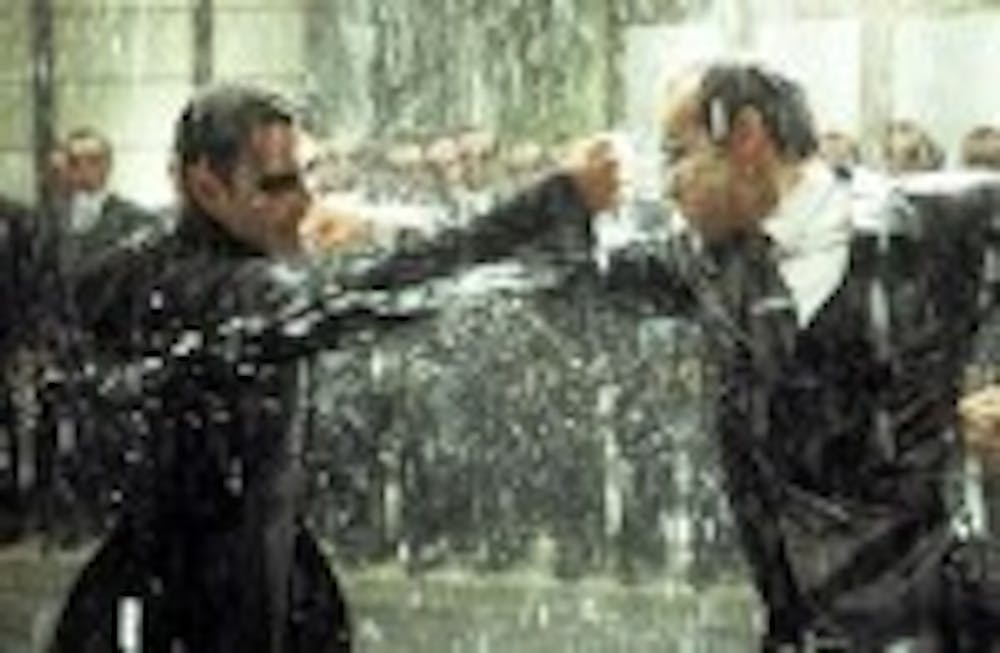"The Matrix" was prophetically mind-blowing. "The Matrix Reloaded" was mind-bogglingly long-winded, and the third and final installment, "The Matrix: Revolutions," ends with a mountain range of peaks and valleys.
"The Matrix Revolutions" is the conclusion to the epic battle between man and machine. The movie brings the whole nine yards that the directors and writers, the Wachowski brothers, have come to be synonymous with.
Yet, the majority of the large population who grew enamored with the series will be irritated by the Wachowski brothers' attempts to show the emotions of their stoic characters. Those who anticipate a catharsis will be sorely disappointed.
It seems that in "Revolutions," the Wachowski brothers decided to stop experimenting with new ideas on reality and simply re-invented the success of the first two films.
The fight scenes are familiar. Even some of the moves are repeated, like Trinity's (Carrie-Anne Moss) unique crane-style flying kick.
Also, scenes from the previous movies were elongated to give a better view of the world in which the Matrix trilogy is set. In "Revolutions," the audience is shown a clearer view of the fields in which human beings are grown and harvested.
The special effects featured in "Revolutions" are spectacular yet cautious of overstepping the boundaries of excess.
Rather than making audacious fight scenes, like the Neo (Keanu Reeves) vs. multiple Agent Smiths (Hugo Weaving) in "Reloaded," the special effects crew makes the best of the fights in "Revolutions". Not unlike the ripple effects of boulders dropping into a stagnant river, every punch or kick creates a seismic impact.
Every clash between Neo and Smith in "Revolution" sends reverberations through the streets of the city in the matrix. In one scene a heavy downpour of rain allows every move made by Neo or Agent Smith to be emphasized by the dissipation of the surrounding water. Perhaps the most unique shot is the close-up slow motion sequence in which the rain is pushed aside by the punch's force, demonstrating the trajectory of the punch.
One is also taken on a rollercoaster of emotion - hope, despair, misfortune, luck, hate and love. The movie jumps from imminent victory for mankind to inescapable defeat by the machines, and right back again.
These ups and downs coincide with the clich?(c)d drama of Hollywood blockbusters. Every time someone dies, the character has just enough time to utter the important final words and message of encouragement to go on. Some would feel that this side of the movie makes the film more human, while others would disagree by stating it cheapens the film by making it become a soap opera.
The overall theme of "Revolutions" is revolution, not resolution. The storyline of the trilogy has progressed to explore the ideas of reality being a fa?\0xA4ade, the rebellion against the machine overlords and the prominence of eventual salvation. Coupled with deceptive trailers, trilogy fans expect the prompt and simple resolution of the situation.
However, the revolution arrives and passes without a definite closure. This open-ended ending is a conclusion of the trilogy but does not resolve everything. To an extent, it is infuriating to watch an action movie and leave feeling cheated of a thrilling, victorious ending. But the transcendent closure to an epic trilogy provides serenity and tranquility after two hours of heart-pounding action.





